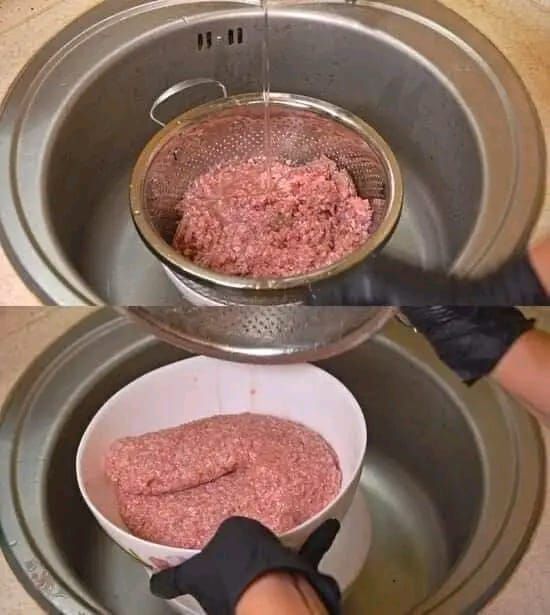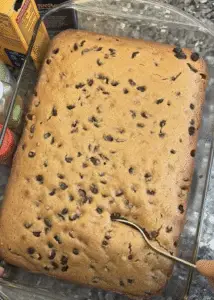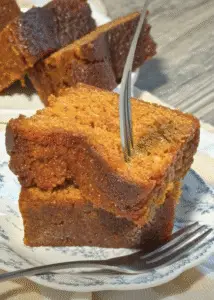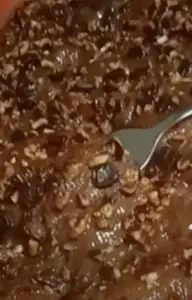
First, let me just say—thank you for trusting me with one of the most common, yet strangely controversial, kitchen questions of our time. Ground beef is such a reliable hero ingredient in the kitchen. Whether it’s your famous taco night, Grandma’s meatloaf, or a big pot of chili on a rainy Sunday, it’s been feeding families for generations.

But somewhere along the way, this question started swirling:
“Should I wash my ground beef before cooking?”
Today, we’re going to settle it once and for all—while keeping all the delicious flavor and safety tips you need in your apron pocket.
Why People Think You Should Wash Ground Beef
Before we dive into the “don’ts,” let’s understand the “whys.” Some cooks swear by rinsing ground beef because they believe it:
- Removes excess fat for a leaner, healthier dish.
- Washes away bacteria for safer eating.
- Reduces grease splatter in the pan.
And while a couple of these sound reasonable, the truth is… they don’t quite work the way you might think.
Why Experts Say “No” to Washing Ground Beef
Here’s the deal: the USDA and most professional chefs agree—washing raw ground beef is not only unnecessary but can actually cause more problems than it solves.
1. You’ll Lose Flavor
Fat in ground beef isn’t the villain it’s often made out to be—it’s where much of the flavor lives. Rinsing washes away those flavorful juices, leaving your dish bland and dry.
2. You’ll Ruin the Texture
Water and ground beef are not friends. Rinsing adds moisture that prevents a proper sear. Instead of browning beautifully, your beef will steam and turn mushy.
3. You Increase the Risk of Contamination
When you rinse raw meat in the sink, those water droplets don’t just disappear—they can carry bacteria to nearby utensils, cutting boards, or even that clean dish towel hanging nearby.
How to Reduce Fat Without Washing
Good news—you can make your ground beef leaner without washing it down the drain. Here’s how:
- Cook it completely until no pink remains.
- Drain the fat into a heatproof container or bowl (never the sink—your plumber will thank you).
- Blot with paper towels to remove even more grease if desired.
Step-by-Step: Cooking Ground Beef Like a Pro
- Preheat your skillet – Medium-high heat works best for a golden brown sear.
- Add the beef – Break it up gently with a wooden spoon or spatula.
- Brown evenly – Stir occasionally, letting the meat caramelize in spots for extra flavor.
- Drain the fat – Use a spoon or carefully tilt the pan into a strainer over a bowl.
- Season well – Salt, pepper, and your favorite spices or sauces bring it to life.
Serving Ideas That Make Ground Beef Shine
- Weeknight Tacos – Crisp lettuce, shredded cheese, fresh salsa.
- Spaghetti Bolognese – Slow-simmered sauce with garlic bread.
- Stuffed Bell Peppers – Rice, beef, tomato sauce, and melted cheese.
- Sloppy Joes – Sweet, tangy sauce on toasted buns.
What About the Grease Disposal?
Please—never, ever pour hot beef fat down your sink. It cools, hardens, and causes clogs you can’t fix with a plunger.
Better Way:
- Let the grease cool in an empty can or jar.
- Once solid, toss it in the trash.
FAQs
Q: Does rinsing ground beef remove bacteria?
No—only proper cooking to 160°F (71°C) kills harmful bacteria.
Q: Will rinsing reduce fat content?
Yes, but only slightly—and at the cost of flavor and texture.
Q: Is there any meat you should rinse?
Not really—washing poultry or beef increases contamination risk. Just pat dry if needed.
Final Verdict
Don’t wash ground beef before cooking. You’ll keep more flavor, maintain better texture, and keep your kitchen safer. Instead, focus on good cooking technique and safe fat disposal.
So next time you’re making tacos, spaghetti, or meatloaf, skip the sink—reach straight for the skillet. Your taste buds (and your plumbing) will thank you.





Leave a Reply